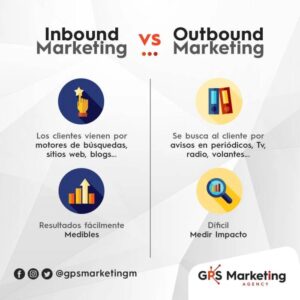
Customer journey tracking tools are revolutionizing the way businesses approach marketing by providing deep insights into customer behaviors and preferences.
These tools allow companies to visualize the entire customer experience, from initial contact to final purchase, enabling them to optimize touchpoints and enhance engagement throughout the journey. With a variety of options available, understanding the features and implementation strategies of these tools is crucial for any marketer looking to stay ahead of the competition.
Understanding Customer Journey Tracking Tools
Customer journey tracking tools are essential instruments for marketers aiming to enhance customer experience and optimize interactions throughout the buying process. These tools allow businesses to visualize and analyze the path a customer takes from initial contact through to the final purchase and beyond, helping to identify pain points and opportunities for improvement.The significance of customer journey tracking tools lies in their ability to provide valuable insights into customer behavior.
By understanding how customers interact with various touchpoints, businesses can tailor their marketing strategies, improve service delivery, and ultimately boost customer satisfaction and loyalty.
Comparison of Popular Customer Journey Tracking Tools
There are numerous customer journey tracking tools available on the market, each offering unique features and capabilities. Below is a comparison of some of the most popular tools that organizations use to track and analyze customer journeys:
- Google Analytics: A widely used tool that provides comprehensive data on website traffic and user behavior. It helps businesses track user engagement and conversion rates effectively.
- HubSpot: This all-in-one marketing platform offers customer journey tracking alongside CRM capabilities. HubSpot allows for detailed segmentation and personalized content delivery based on customer interactions.
- Hotjar: Known for its heat mapping and session recording features, Hotjar provides qualitative insights into how users interact with websites, revealing areas of interest and confusion.
- Mixpanel: A powerful analytics tool that tracks user interactions not just on websites but also in mobile and web applications, providing deep insights into customer journeys.
- Adobe Experience Cloud: A comprehensive suite that combines analytics and marketing tools, Adobe Experience Cloud offers robust features for tracking customer interactions across multiple channels.
Distinct Features of Top Tracking Tools
The effectiveness of customer journey tracking tools often hinges on their distinct features. Understanding these features can help marketers choose the right tool for their needs. Some distinguishing features include:
Real-Time Analytics
The ability to access up-to-the-minute data allows businesses to make swift adjustments to their marketing strategies.
Cross-Channel Tracking
Tracking user journeys across multiple platforms (web, mobile, social media) provides a complete view of customer interactions.
Segmentation and Targeting
Advanced segmentation capabilities enable businesses to tailor marketing efforts based on specific customer characteristics and behaviors.
Visual Journey Mapping
Tools that offer visual representations of customer journeys enhance understanding and facilitate discussion among stakeholders.
Integration Capabilities
The ability to integrate with other marketing tools, like CRMs and email marketing software, streamlines data collection and analysis.
“Understanding your customer journey is crucial; it enables organizations to create more effective marketing strategies and improve customer satisfaction.”
Implementation Strategies for Customer Journey Tracking
Successfully implementing customer journey tracking tools requires a well-structured approach that aligns with a business’s existing processes and objectives. It involves understanding the unique touchpoints customers encounter and leveraging technology to gather relevant data. The following strategies Artikel the crucial steps to effectively adopt these tools.
Steps to Successfully Implement Customer Journey Tracking Tools
Implementing customer journey tracking tools involves several essential steps. Each step focuses on building a solid foundation for understanding customer interactions across different channels. Here are the key steps to consider:
- Define Objectives: Establish clear goals for what you want to achieve with customer journey tracking. This could include improving customer satisfaction, reducing churn rates, or increasing conversion rates.
- Map the Customer Journey: Identify all touchpoints where customers interact with your brand. This mapping should cover both online and offline interactions to provide a comprehensive view of the customer experience.
- Select Appropriate Tools: Choose customer journey tracking tools that align with your business needs. Consider features such as integration capabilities, data analytics, and user-friendliness.
- Train the Team: Ensure that your team is well-trained on how to use the tools effectively. This includes understanding how to interpret data and make data-driven decisions.
- Monitor and Adjust: Continuously monitor the performance of the tracking tools and make necessary adjustments based on feedback and evolving business needs.
Integration with Existing Marketing Software
Integrating customer journey tracking tools with existing marketing software enhances data coherence and provides a holistic view of customer behavior. To achieve seamless integration, consider the following methods:
- API Connections: Utilize Application Programming Interfaces (APIs) to connect customer journey tracking tools with existing marketing platforms. This allows for real-time data sharing and synchronization.
- Data Import and Export: Leverage data import and export features to transfer relevant data between systems. Ensure that data formats align to prevent discrepancies.
- Unified Dashboards: Create unified dashboards that compile data from various sources. This provides a consolidated view of customer interactions, making it easier to analyze trends and patterns.
Best Practices for Ensuring Data Accuracy and Reliability
Achieving data accuracy and reliability is critical for the success of customer journey tracking. Accurate data leads to better decision-making and enhances the overall effectiveness of marketing strategies. Implement the following best practices to maintain high data quality:
- Regular Data Audits: Conduct periodic audits of the data collected to identify and rectify inaccuracies. This process should include verifying sources and ensuring that data is up-to-date.
- Set Validation Rules: Establish validation rules within the tracking tools to prevent incorrect data entry. This can include formatting checks and duplicate entry prevention.
- Employee Training: Provide ongoing training for employees on the importance of data accuracy. Educate them on how to use the tools properly and report inconsistencies.
- Feedback Mechanisms: Implement feedback mechanisms that allow customers and employees to report data inaccuracies. This ensures that any discrepancies are addressed promptly.
“Accurate data enables organizations to make informed decisions that enhance customer experience and loyalty.”
Related Market Research in Customer Engagement
![Defining Your Target Market | Principles of Marketing [Deprecated] Defining Your Target Market | Principles of Marketing [Deprecated]](https://hestiio.info/wp-content/uploads/2025/06/4404316225_dc2febc426_b.jpg)
Market research plays a pivotal role in enhancing customer engagement by providing insights into consumer behavior, preferences, and trends. Understanding these factors allows businesses to tailor their marketing strategies and improve customer satisfaction. This segment explores various market research techniques, complementary marketing software, the benefits of public relations campaigns, and a comparison of telemarketing effectiveness with and without customer journey tracking tools.
Key Market Research Techniques
To effectively understand customer behavior, several market research techniques can be employed. These methods help organizations gather actionable insights that inform decision-making and strategy development.
- Surveys: Gathering direct feedback from customers through online or in-person surveys to assess satisfaction and preferences.
- Focus Groups: Engaging small groups of customers to discuss their experiences and perceptions related to products or services.
- Customer Interviews: Conducting one-on-one interviews to gain deeper insights into customer motivations and pain points.
- Behavioral Analytics: Using data analysis tools to track customer interactions with products across different platforms and channels.
- Market Segmentation: Dividing the market into distinct groups based on demographics, behaviors, or needs, allowing for tailored marketing approaches.
Marketing Software Complementing Customer Journey Tracking
Various marketing software solutions can enhance the effectiveness of customer journey tracking. These tools provide essential capabilities that optimize customer engagement efforts.
- CRM Systems: Software such as Salesforce or HubSpot allows businesses to manage customer relationships and track interactions over time.
- Email Marketing Platforms: Tools like Mailchimp or Constant Contact enable targeted communication based on customer behavior identified through journey tracking.
- Social Media Analytics: Platforms such as Hootsuite or Sprout Social provide insights into customer sentiment and engagement on social media channels.
- Web Analytics Tools: Google Analytics helps track visitor behavior on websites, providing data to optimize user experiences.
- Behavioral Targeting Software: Solutions like AdRoll allow for personalized online advertising based on user behavior tracked across various touchpoints.
Benefits of Public Relations Campaigns from Customer Journey Insights
Public relations campaigns can significantly benefit from insights gained through customer journey tracking. Understanding customer touchpoints and sentiments allows PR professionals to craft more effective messaging and engagement strategies.
“By leveraging journey insights, we can align our PR messages with customer expectations, ultimately enhancing brand loyalty.”
Insights enable targeted communication, helping PR teams select appropriate channels and messages that resonate with the audience. Furthermore, tracking customer interactions with media allows organizations to refine their PR strategies, ensuring a cohesive brand story across all platforms.
Comparison of Telemarketing Effectiveness
Assessing the effectiveness of telemarketing efforts with and without customer journey tracking tools reveals significant differences in outcomes.
| Aspect | Without Customer Journey Tracking | With Customer Journey Tracking |
|---|---|---|
| Lead Qualification | Generic approach to all leads, leading to lower conversion rates. | Data-driven insights allow for prioritization of high-quality leads, increasing conversion rates. |
| Personalization | Standardized scripts with little customization. | Personalized communication based on customer data leads to higher engagement. |
| Follow-up Strategy | Poor follow-up rates due to lack of targeted insights. | Informed follow-up strategies based on customer interactions improve response rates. |
| Overall Effectiveness | Lower ROI from telemarketing efforts. | Higher ROI due to targeted, informed approaches improving engagement and sales. |
Closing Notes

In summary, embracing customer journey tracking tools not only empowers businesses to understand their customers better but also drives meaningful engagement, ultimately leading to increased loyalty and sales. As the marketing landscape continues to evolve, leveraging these insights will be key to crafting successful strategies that resonate with target audiences.
Common Queries
What are customer journey tracking tools?
They are software solutions that help businesses analyze and visualize the customer journey to improve marketing strategies.
Why are customer journey tracking tools important?
They provide insights into customer behavior and preferences, leading to better engagement and higher conversion rates.
How do I choose the right customer journey tracking tool?
Consider factors like features, integration capabilities, ease of use, and pricing when selecting a tool.
Can these tools integrate with my existing marketing software?
Yes, many customer journey tracking tools offer integration with popular marketing software and CRM systems.
How can I ensure accurate data from these tools?
Implement best practices for data management, such as regular audits and validation processes, to maintain data accuracy.





